The Cherokee Indians were one of the largest Native American Tribes that settled in the southeastern part of America. The tribe was originally of Iroquoian descent, and lived in the Appalachian Mountains. Eventually they settled towards the east coast.
The Cherokees actually lived in log cabins and not teepees as always portrayed. The Spanish settlers brought over diseases that the Cherokees were never exposed to and therefore had no immunity to these. In the 1800’s the Cherokees started to adopt some of the ways belonging to the settlers that moved to their lands. They started farming and even dressing like them.
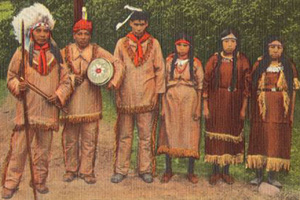 The Cherokees were a very religious and spiritual tribe. Their tribe was a strong one, and it consisted of smaller tribes that were each led by a chief. When gold was discovered, the tribes were forced to leave their homes and go live elsewhere. The forced relocation cost close to 4000 members their lives, during the thousands of miles they had to travel. This became known as The Trail Of Tears.
The Cherokees were a very religious and spiritual tribe. Their tribe was a strong one, and it consisted of smaller tribes that were each led by a chief. When gold was discovered, the tribes were forced to leave their homes and go live elsewhere. The forced relocation cost close to 4000 members their lives, during the thousands of miles they had to travel. This became known as The Trail Of Tears.
The largest of the three Cherokee federally recognized tribes in the United States lives today in Oklahoma. There are several thousand residents that reside in the communities there.
When the Cherokees were free people and lived a simple life, they relied on plants to treat and cure many illnesses that affected them. They had medicine spiritual healers who knew which plant is best for each disease. Here we will list 10 of the most powerful medicinal plants used by them.
Related: 11 Things Native Americans Carried With Them To Survive In The Wild
#1. Mullein
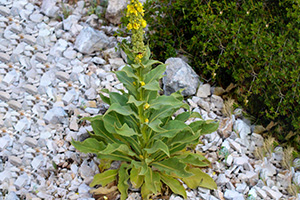 The Cherokees used Mullein all the time. The dried leaves were burned to relieve chest congestion and asthma symptoms. The roots were boiled and mashed for making a relief decoction for swollen limbs and joints.
The Cherokees used Mullein all the time. The dried leaves were burned to relieve chest congestion and asthma symptoms. The roots were boiled and mashed for making a relief decoction for swollen limbs and joints.
The flowers were used for making tea that worked as a mild sedative. Mullein leaves were also rubbed on the skin to treat rashes.
Mullein prefers sunny well drained soil, and can be grown straight in your garden or in flower beds. The herb will be ready for use by the second year of growth. This is also a self sowing plant, so it will regrow itself for the next years to come.
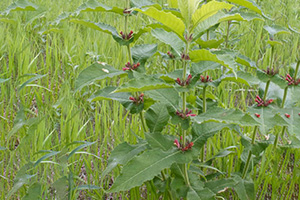
#2. Feverwort
This plant was used by the cherokees to treat fevers. They used the leaves and flowers to make tea.
Feverwort is still a common plant nowadays. You can find it in stores as tea, or you can purchase dried leaves and flowers.
#3. Arnica
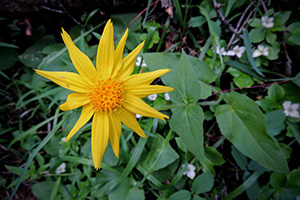 Arnica is a member of the sunflower family, and it was originally grown in Europe, Central Asia, and Siberia. Nowadays it can be grown in any sunny location with ease. The plant has yellow-orange daisy-like blooms that bloom in late spring to early summer months.
Arnica is a member of the sunflower family, and it was originally grown in Europe, Central Asia, and Siberia. Nowadays it can be grown in any sunny location with ease. The plant has yellow-orange daisy-like blooms that bloom in late spring to early summer months.
Arnica is still widely used today. It is used as a salve, being a mild pain reliever for bruises, muscle aches, sprains and arthritis. The dried flowers and leaves are used for making lotions and creams.
WARNING: Arnica can NEVER be ingested internally as it is fatal.
Related: Top 8 Deadly Plants in the U.S. That You Need To Avoid
#4. Blackberry
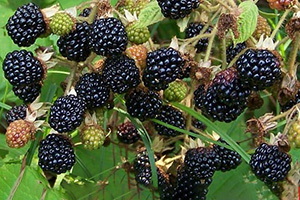 Blackberry bushes can be found about anywhere along trails and roads. The wild blackberry bush is great for inflammation and joint pain. It is also great for treating an upset stomach. Make a strong tea from the roots and drink it. Boil the roots and add a bit of honey and drink it as a cough expectorant. Chew the leaves to help relieve a sore throat and bleeding gums.
Blackberry bushes can be found about anywhere along trails and roads. The wild blackberry bush is great for inflammation and joint pain. It is also great for treating an upset stomach. Make a strong tea from the roots and drink it. Boil the roots and add a bit of honey and drink it as a cough expectorant. Chew the leaves to help relieve a sore throat and bleeding gums.
#5. Common Sumac
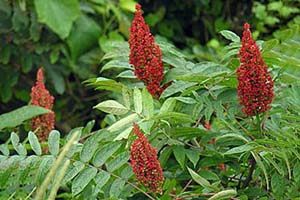 Sumac is a super medicinal tree that can be found almost everywhere. By boiling the tree bark and straining the liquid, you will get a drink that helps with sore throats. The berries of the sumac are high in Vitamin C and make a great remedy for fevers. Sumac is also known to help relieve diarrhea.
Sumac is a super medicinal tree that can be found almost everywhere. By boiling the tree bark and straining the liquid, you will get a drink that helps with sore throats. The berries of the sumac are high in Vitamin C and make a great remedy for fevers. Sumac is also known to help relieve diarrhea.
#6. Black Cohosh
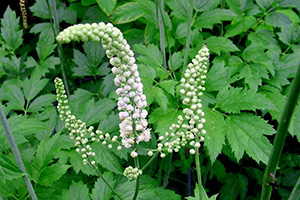
Black Cohosh is found in hardwood forests and it can grow over six feet tall. It has large leaves that are irregularly toothed. The flowers are white and bloom from May to July.
Black Cohosh was used to help women by inducing labor. It was also used to help with menstrual pain and cramping. A decoction made with Black Cohosh can be used for a range of ailments: rheumatism, backache, cough, insomnia.
#7. Yarrow
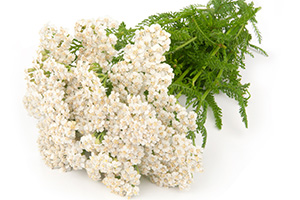 Yarrow is a great plant for its blood clotting ability. The fresh cut leaves will stop bleeding when applied to open wounds. The juice from yarrow mixed with spring water will help stop any internal bleeding.
Yarrow is a great plant for its blood clotting ability. The fresh cut leaves will stop bleeding when applied to open wounds. The juice from yarrow mixed with spring water will help stop any internal bleeding.
Tea made from leaves is a great help for digestion. Making a decoction from leaves and stems will help to clear up acne.
Yarrow can be found in sunny locations about anywhere. You can find it growing along roads, in fields, waste zones, and even in your garden.
#8. Ginseng
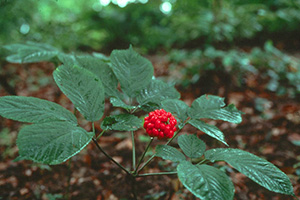 American Ginseng is a widely popular plant and has been used for its medicinal purposes for years. This plant prefers shade and a rich moist soil to prevent it from drying out during the growing season.Wild ginseng is hard to come by as it has been harvested so extently.
American Ginseng is a widely popular plant and has been used for its medicinal purposes for years. This plant prefers shade and a rich moist soil to prevent it from drying out during the growing season.Wild ginseng is hard to come by as it has been harvested so extently.
The Cherokees highly prized the ginseng and medicine healers kept some of the roots with them at all times. This was one of the plants that they took with them on the Trail Of Tears. The root was used for making tea, to treat headaches and cramps.
It was also used to stimulate appetite in the elderly and as a treatment for those who had colds, flu, or infections. A poultice was made from the roots and applied to boils. They would also chew the roots and blow the material through a wooden tube onto the painful area.
Related: 7 Medicines You Should Know How To Make At Home
#9. Skullcap
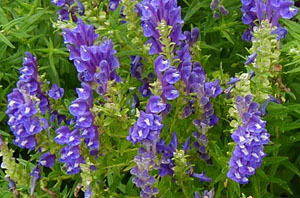 Skullcap is part of the mint family and thrives in the eastern parts of the United States in moist woodland environments. Cherokees used skullcap to start menstruation in girls entering womanhood. They also made a decoction from the plant to treat diarrhea, breast pain, and kidney problems.
Skullcap is part of the mint family and thrives in the eastern parts of the United States in moist woodland environments. Cherokees used skullcap to start menstruation in girls entering womanhood. They also made a decoction from the plant to treat diarrhea, breast pain, and kidney problems.
#10. Goldenseal
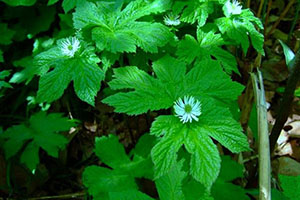
Cherokees used Goldenseal as a wash to treat sore eyes and skin diseases. It was also ground into powder and mixed with bear fat to be used as an insect repellent. The natural color was also used as a yellow dye.
Goldenseal grows in the wild in wooded areas or on the hillsides with good drainage. It grows to about one foot tall and has an erect stem that is hairy and produces greenish-white flowers. The flowers bloom in early spring and then turn into red berries.
The Cherokee tribe did not have access to pills and today’s medicine for treating illnesses. They only had the medicinal herbs. They knew how to gather and preserve the plants, and how to use them to treat and prevent illnesses. The Cherokee relied heavily on their spiritual beliefs and allowed Mother Earth to treat and heal them.
Today, some of the plants are very hard to find as they were overused and some have completely disappeared. The Cherokee believed in taking only what you need. Therefore, they had a harvest rule of only picking or digging every third plant to keep enough specimen to regrow for later harvest.
You may also like:
 24 Lost Survival Tips from 100 Years Ago with Illustrations
24 Lost Survival Tips from 100 Years Ago with Illustrations
The U.S. Army’s Forgotten Food Miracle (Video)
11 Things The Pioneers Carried With Them On The Oregon Trail
This Common Driveway Weed is One of Nature’s Most Powerful Survival Plants
23 Medicinal Plants the Native Americans Used on a Daily Basis

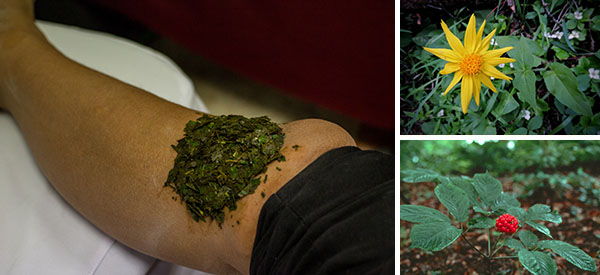










Jftr, saying ‘Cherokees’ is like saying ‘peoples’ or ‘deers’. The word is both singular and plural, without the ‘s’.
Beyond that nitpicky bit, skullcap is also great for easing insomnia, and is even safe for that use, in little ones. Arabica is the only one of the bunch that should never be taken, internally (with they one exception being the tiny, highly diluted homeopathic pellets), because it can cause irreversible liver damage. Keep it typical, and not on broken skin, and you’re good to go – I use it, often! 😉
My Apache Grandmother used Arnica on broken skin. I was suppose to get stitches on my head and I wasn’t going to have it. I was injured in 7th grade. running backwards while talking with the girls hit the volleyball pole that had a rusted bolt. ripped skin clean off, blood everywhere The Whole Shebang. anyways called grandma and she cut surrounding hair, skin, cleaned and put powdered Arnica. stiches be gone…
The plural form of Cherokee is Cherokees. https://www.wordhippo.com/what-is/the-plural-of/Cherokee.html
It’s an either or thing. I always preferred ani, the people, with ‘i used as a contraction. Ani Tslalaki, or Tslalaki’i.:) Niio! Walk in god’s beauty.
“topical” not typical. Since you were quick to correct others
My Grandmother (1/2 Cherokee) used to pick leaves from a plant that grew around our home in Placerville. She was originally from Alma AR. She would dry the leaves and when needed make a poultice and use it for infections. She cured my foot when I stepped on a rusty nail in the chicken coop. She called it Jew -su-moke. Can anyone identify it. Strong smell.
I checked it out for you, an interesting plant. Much information available. I chose Wiki (not that I like Wiki, but summat like this, they tend to be reliable,and their info checks out with a wealth of other info, so can enjoy more digging) :- Tradescantia zebrina – Wikipediaen.wikipedia.org › wiki › Tradescantia_zebrina
Tradescantia zebrina, formerly known as Zebrina pendula, is a species of spiderwort more commonly known as an inchplant or wandering jew. The common name is shared with closely related species T. fluminensis and T. pallida. Contents. 1 Description; 2 Habitat; 3 Uses. 3.1 Cultivation; 3.2 Medicinal … The low-lying, slightly succulent, perennial, herbaceous plant.
.Thank you. Sorry it took so long to reply. I want to pass this on to my grandchildren
It is good to know which plants can have what aids and remedies. Just as important is to know when to harvest them and how to prepare them.
The Native Americans did not need any pills nor potions from drug companies. They had the real thing – the healing herbs God put on the planet so they would not have to depend upon Big Pharma and their poisons.
BTW, many of the native healing depended upon Cannabis and its derivatives.
did you buy the solar panel killer?
HAHAHAHAHA
i likes a good joke and sarcastic humor.
I happend to be a Photovoltaic / Solar Thermal Technician
i Like, OLE!
Hell, no!
Lee, is your comment directed at Sunday or Moi ? if your final answer is at me, i still got your back.
My message was directed at Sunday. I know how to build my own solar collector system including the battery charger, power inverter, and isolation relay. My background is electronics repairs and electronic hobby building.
I was just thinking earlier that I can get solar panels for free by freecycle requesting a bunch of those dead sidewalk decoration lights.
done that with daughter. even bought some at the 99 cent store
At risk of sounding like one of those nuts we’re fighting, nation, not tribe. Tribe was a liberal term of contempt. The ani were a democracy long before Columbus showed up (and he was not the monster liberals claim!). Women held elected office, and often were civil leaders in the towns.
Gold is pretty, but mostly valueless to people who have no use for money. Dalonega, where gold is found, was well-known early in N. Carolina colonial history. Cherokee mined some for trade, but mostly it was dust and needed special equipment to extract.
Tobacco was and still is the number one healer. It’s called tsilov, God’s love plant. Smoke is Breath of God. The pipe is considered a holy relic, so much so, there are Native Americans who will kill people who blaspheme one. Smoke is ONLY inhaled when used as a medicinal, usually with peppermint (menthol, treatment f asthma), or cloves (lung infections) and so on. When in bloom, the smell is so sweet, husbands entice wives to camp out in the tobacco patch. A lot of babies got their start under the stars, with the perfume of tobacco blossoms in the air. Me, for one 🙂
Tobacco is antibacterial, antiviral. 0.5% extract of tobacco injected into AIDS victims has killed the virus (this was done in Germany in the 80s). Tobacco is called a hot herb, so use with caution. It scorches (feels painfully like) into open wounds, sterilizing them. It stops a wound from bleeding, but it it’s a deep wound, or a child, calèndula petals are much better and a pad of dampened cobwebs over that. niio
I’ve been reading your site for a long time now. I love it. I ordered one of your books in hardcover and keep it handy in my bookshelf. I ordered your 2nd book but got it as a download instead of a hard copy. I was thoroughly disappointed that it wasn’t a printed hard copy book. I’m sure it was because I didn’t tick some obscure box on the order sheet – my fault.
Your articles are a great resource for me and I’m sure a lot of other people. My point is, I wish you would create other ‘books’ grouped by similar subject. Hard copy books. It seems intuitive to me that the vast knowledge you share is useless in a SHTF scenario if your readers, have to look online when there is a greater likelihood of the power grid being down.
I will start building a wall to wall bookshelf tomorrow dedicated to your articles if you would only make them available in print.
I’ve printed dozens of your articles myself but eventually gave up because of the cost of printer ink (primarily), paper and binders is ridiculous. And books are – well – just better, what else can I say? I’m sure you’ve heard this from other subscribers. Please give it some thought. Thanks
Crusty
Yarrow will also knock out a fever when drink like a tea, just like aspirin.
Don’t Let Phishing, Malware or Trojans get you.
What to look for: whatsapp, typos – sickle cell anemia NOT sickle and anaemia
Red Flag: #8 Hmm “i told the witch doctor i was in love with you…”